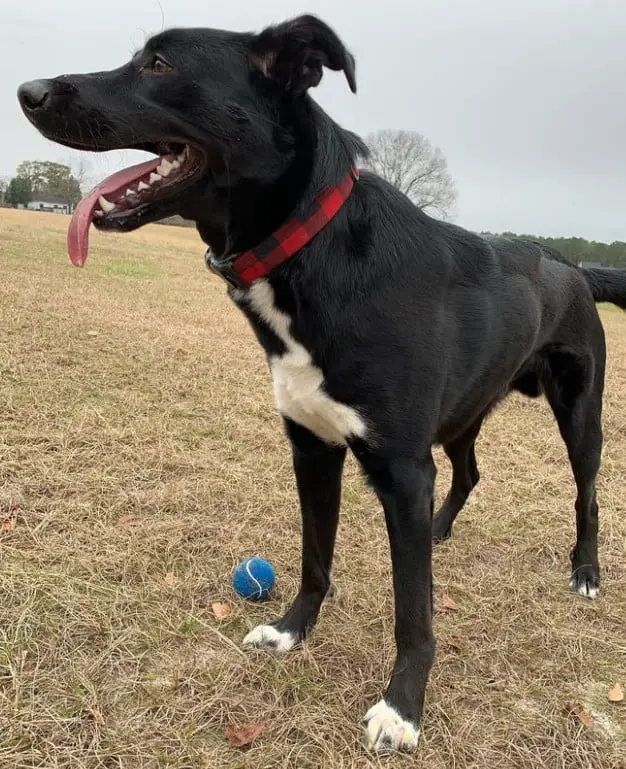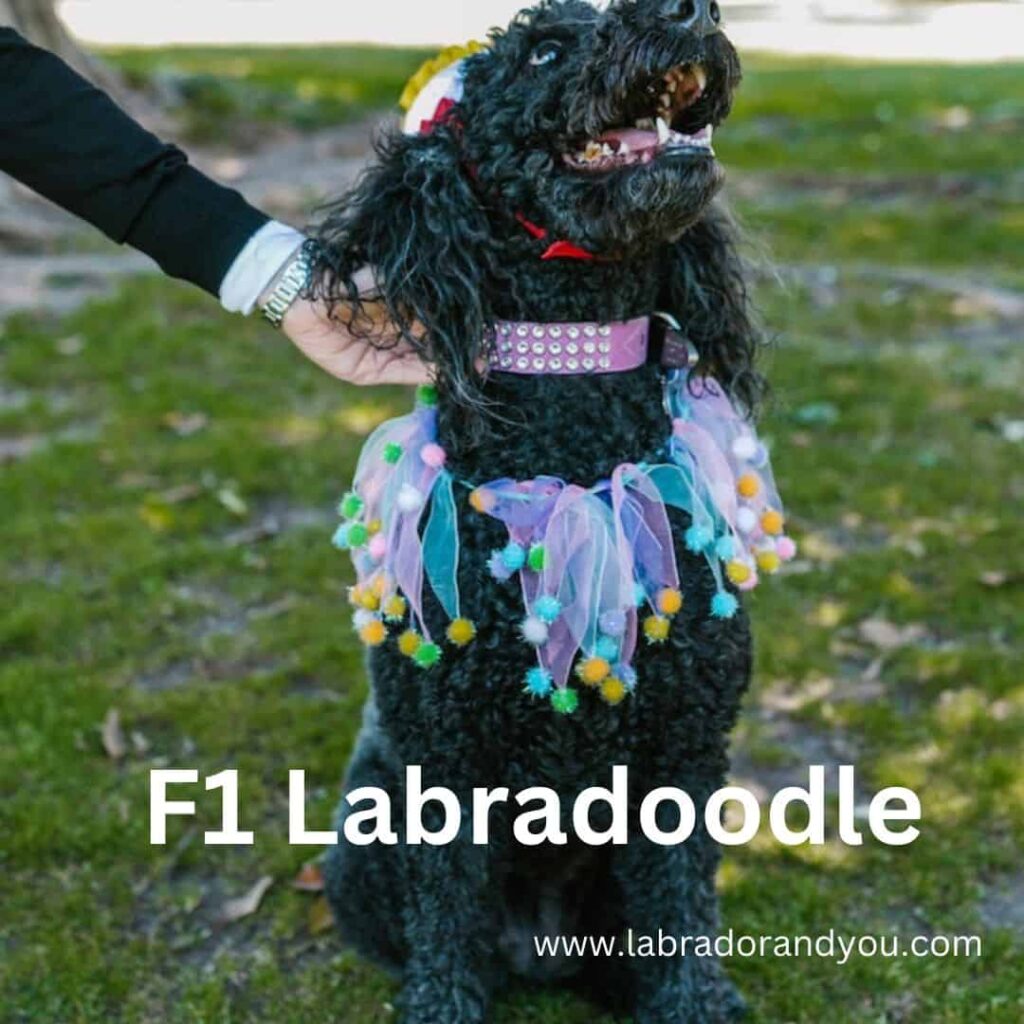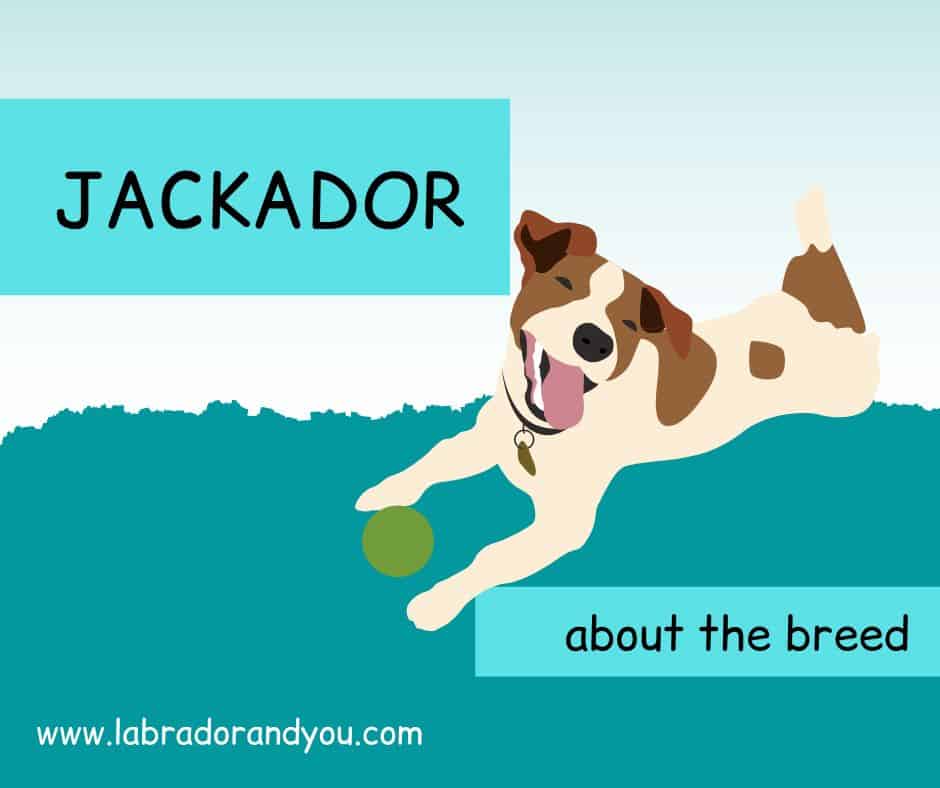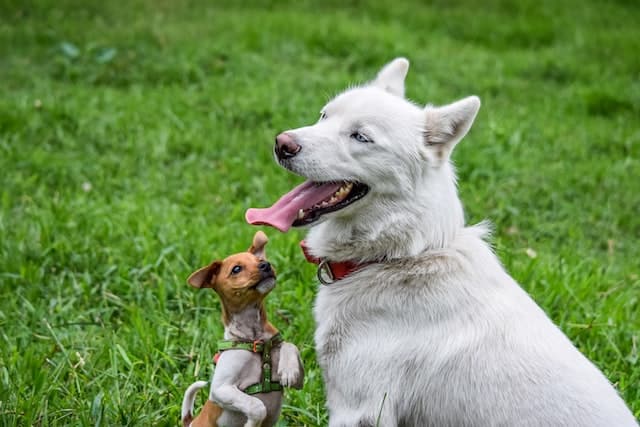Looking for a healthy german shepherd lab mix pup? Well, the German Shepherd Lab mix is a popular mixed breed dog. It has become more common in recent years. This mix is a cross between a German Shepherd and a purebred Labrador Retriever. These are two of the most popular large-breed herding and sporting breeds.
This mixed breed combines the German Shepherd’s intelligence and working ability. This popular dog combines the Lab’s friendliness and trainability. These large breed dogs need plenty of exercise and mental stimulation. A dog toy can help entertain these smart dogs. The toys also prevent destructive chewing.
Let’s learn more about the German Shepherd lab pup.
Origin Of The German Shepherd Lab Mix Pup
German Shephradors are a first-generation crossbreed that originated as a designer dogs in North America within the last few decades. Its parents are one of the most popular dog breeds in the world and make the perfect family dog.
Creation of the Breed
The German Shepherd Lab mix was likely first intentionally developed sometime in the 1980’s or 1990’s when interest rose in creating hybrid dogs by crossing two popular purebreds. Breeders aimed to produce a dog with the most desirable qualities from each parent breed.
Parent Dog Breed Histories
The German Shepherd originated as a herding dog in Germany in the late 1800s. Valued for intelligence, loyalty and working ability, it became one of the most popular breeds. The Labrador has its roots as a waterdog in Newfoundland, Canada in the 1700s. It excelled as a sporting and hunting dog and later as a companion. Labs are known for being friendly, gentle and eager to please.
Combining the Breeds
By combining these two intelligent, energetic and versatile breeds, breeders hoped to create an ideal companion dog – one that had the German Shepherd’s courage and willingness to work, with the Labrador’s amicable traits. While a relatively new crossbreed, the German Shepherd Lab mix has quickly grown in popularity.

German Sheprador Dog Breed Information And Breed Traits
Temperament
German Shepradors are intelligent and active. They are excellent family pets who adore their dog owners. They are protective, making them suitable for roles like service dogs and therapy dogs.
Size & Appearance
As a cross between two large purebreds, the sheprador dog is large, ranging from 20 to 27 inches tall at the shoulder and 50 to 90 pounds in weight. The Sheprador has a strong, muscular build with a broad head, medium-sized ears that hang down, and a long, thick tail. Its coat can vary significantly depending on which parent breed it takes after.
It may have the medium-length dense hair of a German Shepherd, the short, dense, water-resistant fur of a Lab, or something in between. Common coat colors include black, brown, tan, yellow, and cream.
Occasionally Shepradors may have a mix of colors and markings. Their expressive eyes are often a brown or hazel color. Overall, the Sheprador combines physical features of both its parent breeds.
Coat & Colors
The German Sheprador’s coat is short and thick, with a straight or slightly wavy texture. They have a double coat, a soft undercoat, and a rougher topcoat. The coat color can vary depending on the specific mix of genes inherited from the German Shepherd and Lab parent breeds.
- Black Lab Mix – This is a very common color for Labs and German Shepherds. A black German Shepherd Lab mix often has some brown or tan markings on the paws, chest, and muzzle.
- Sable – This is a multi-colored coat with black tipped hairs over a lighter base. It’s a common color for German Shepherds. The sable hairs can range from light tan to reddish.
- Tan or Fawn – This tan/fawn coat is very typical of Labs. It can range from a light cream to a rich reddish tone. German Shepherds can also have a tan/fawn coat.
- Brown – A rich chocolate brown coat is seen in both Labs and German Shepherds at times. It’s not as common as black or tan.
- Gray or Silver – Some German Shepherd Labs have a grayish silver tone to their black coat instead of jet black.
- Brindle – Tiger-striped brindle is rare but can sometimes occur from the Lab side.
- White – While uncommon, white German Shepherd Lab mixes are mostly white in color. They often have some black or brown spotting.
Exercise & Living Conditions
The Sheprador requires mental stimulation. They thrive in homes with a fenced yard where they can run and play. Shepradors easily adapt to apartment living with regular exercise. This dog may do better in homes with a yard, where they can expend energy.
Lab Shepherd Mix Dog Breed Nutrition & Dog Food
Feeding your shepherd lab mix a high-quality diet appropriate for their size and activity level is essential. They require a diet high in protein, fat, and carbohydrates to support their active lifestyle. Do provide them with adequate amounts of vitamins and minerals as well. Royal Canin dog food works best for them.
| Age | Feeding Frequency | Type of Food | Key Nutrients | Special Notes |
|---|---|---|---|---|
| 8-12 weeks | 4/day | High-quality puppy kibble | High in protein, DHA calcium | Small, frequent meals help maintain stable blood sugar levels |
| 3-6 months | 3/day | High-quality puppy kibble | A balanced diet with protein, carbohydrates, fiber, fats, vitamins, and minerals | Monitor weight and adjust portion sizes as necessary to prevent overfeeding |
| 6-12 months | 2/day | Puppy kibble transitioning to adult kibble | Protein, fiber, vitamins, and minerals | Gradually switch from puppy to adult food over a week to avoid digestive upset |
| 1 year+ | 2/day | High-quality adult dog food | Adult food should maintain a healthy weight and support overall health. | Adult food should maintain a healthy weight and support overall health |
Grooming
The German Shepherd Labrador Retriever mix, also known as the Sheprador, has a dense double coat that sheds moderately to heavily year-round. Grooming and managing shedding for this hybrid dog takes a bit of regular effort:
- Brushing – Brushing the Sheprador’s coat 2-3 times per week is recommended. Using a slicker brush followed by a bristle brush will help remove loose hair and distribute oils for a healthy coat.
- Bathing – Bathe only when necessary, around every 6-8 weeks. Over-bathing can dry out their skin. Use a dog shampoo made for double coats.
- Deshedding Tools – Special deshedding tools can help manage loose hair between full grooming sessions. A de-shedding glove, shedding blade, or furminator will pull out excess coat when used 1-2 times per week.
- Vacuuming – Vacuum upholstery and floors at least twice a week to manage shedding around the home. Some shedding is inevitable with this mix.
- Supplements – Supplements containing omega fatty acids can help support a healthy skin and coat. Always check with your vet first before starting supplements.
- Groomer Visits – Take your Sheprador to a professional groomer every 8-12 weeks for a bath, brush out, nail trim and tidy up of fur. This can help keep shedding under control.
Exercise
Exercise affects life expectancy as well. These dogs are known for their high energy levels and need plenty of exercise to keep them healthy. Taking your dog for regular walks, runs, or swims helps maintain a healthy weight and support their overall well-being.
Care
Regular vet checkups, vaccinations, and preventative care can help you catch any potential problems early. Additionally, providing your dog with love, attention, and a safe environment can help.

How Do You Get A Lab Shepherd Mix?
When looking for a labrador mix puppy, always research and choose a reputable breeder, they will have health clearances and information needed for the German Shepherd and Labrador parents.
Rescues and shelters
Adopting from a rescue or shelter is another option for adding a Sheprador to your family. Adopting can save a dog in need and be affordable. It’s also essential to research the shelter, ensure they are reputable, and have the dog’s best interests in mind when buying a german shepherd lab mix puppies
| Name of Rescue/Shelter | Location(s) | Specializes in |
|---|---|---|
| American Lab Rescue | Willington, CT | Labrador and Labrador mixes |
| Lucky Lab Rescue and Adoption | Various locations | Labrador Retrievers and Lab mixes |
| German Shepherd Rescue and Adoptions | North Carolina | German Shepherds and German Shepherd mixes |
| BrightStar German Shepherd Rescue | Rochester, NY | German Shepherds |
| All Shepherd Rescue | Baltimore, MD | German Shepherd dogs and related mixes |
| Labrador Friends of the South | Atlanta, GA | Stray, abandoned, and unwanted Labs and Lab mixes |
| Midwest Rescue, Inc. | Midwest region | Labradors |
Training A German Shepherd Lab Mix: Steps
Start Early:
The earlier you start training your Sheprador, the better. Puppies learn new commands faster and are more accessible than adult dogs. Begin working on basic commands such as sit, stay, come, and heel. Progress to more advanced training later.
Use Positive Reinforcement:
Positive reinforcement is the most effective method for training dogs. Reward your german shepherd mix pup for good behavior. For example, if your Sheprador sits when you ask him to, give him a treat and praise him. Don’t praise him if he doesn’t sit. Over time, your Sheprador will learn that sitting gets him a reward, while not sitting doesn’t.
Be Consistent:
Consistency is vital. Regular commands, hand signals, and rewards are essential. This way, the Sheprador will understand what you want him to do.
Socialize Your Sheprador:
Socialization is a must, without which it will lead to aggression. Take your Sheprador to dog parks, obedience classes, and walks to expose him to different people, animals, and environments. He will learn to be comfortable around new situations.
Provide Plenty Of Exercises:
German Shepherds and Labrador Retrievers are the perfect breed who is energetic. Shepradors inherited this as well. Consider taking them for hikes. Playing fetch will also help burn off excess energy.
Puppies should not be allowed to do high-impact exercises like running or jumping until their bones and joints fully develop. Some good exercises for German Shepherd Labrador mix puppies include:
- Walking
- Playing fetch
- Swimming
- Agility training
- Nose work
Train For Specific Needs:
German Shepherds are working dogs, while Labrador Retrievers are known for their retrieving instincts. You can train your Sheprador for tracking and retrieving as well.
Professional Training:
If you find it challenging, consider hiring a professional dog trainer. They can teach you how to train your Sheprador and help you resolve any issues.
Who Should Own German Shepherd Labrador Retriever Mix Puppy?
First and foremost, active individuals and families who enjoy outdoor activities would greatly benefit. These dogs are made for the outdoors.
Secondly, individuals and families looking for a protective companion would love having german shepherd and labrador mix puppies. The strong instinct to protect their loved ones makes them excellent watchdogs.
Thirdly, those looking for a family-friendly pet would also find a Sheprador a great choice. These dogs are sociable, making them a fantastic addition to any family.
Lastly, families looking for a knowledgeable and trainable companion would love having a Lab German Shepherd mix. These dogs are brilliant and have a herd instinct, making them ideal for search and rescue.

Why You Should Get a German Shepherd Labrador Mix?
Many think about only getting a purebred dog. However, there are many benefits to getting a mixed-breed dog.
Intelligence and Trainability
The Labrador Retriever and the German Shepherd are highly intelligent and agile. A Sheprador will understand commands and tricks easily. The Sheprador mixed breed is highly trainable and obedient and makes great service dogs.
Loyalty and Affection
Another reason for novice pet owners to consider a Sheprador is loyalty and affection. The Labrador and German Shepherd are extremely loyal and affectionate. A Sheprador is likely a great companion and can provide security.
Versatility
A final reason to consider getting a Sheprador is because of their versatility. The Labrador and the German Shepherd are highly versatile breeds that also excel in hunting. A Sheprador will likely be able to adapt to any lifestyle and activity, making them an excellent choice.
Adaptability And Designer Registry
Their adaptability makes them fit seamlessly into various roles – be it a search and rescue hero, a devoted service dog, or simply a faithful friend. Bringing home a German Shepherd Lab Mix is not just about owning a pet; it’s about adding a loving and spirited member to your family.
The parent breeds are intelligent dogs, originally bred for retrieving and guarding; these mixed breeds make great watchdogs. If trained, then guard dogs as well. They are not part of AKC’s dog registry but are part of the International designer canine registry. Whether you’re a first-time dog owner or an experienced pet parent, this guide will help you understand a Sheprador puppy better.
Why You Shouldn’t Get A German Shepherd Lab Mix Breed Puppy?
Let us explore three reasons why there may be better ideas than getting Labrador German Shepherd mix puppies.
High Energy Levels
One reason is their high energy levels. Labs and German Shepherds are highly energetic, so a Lab Shepherd mix will inherit these traits. They will require a lot of physical activity and can become aggressive or disobedient if you don’t train them well.
Strong Willed and Independent
Labs and German Shepherds are independent and strong-willed. This makes them harder to train and control. A German Shepherd lab mix with such traits can be difficult to train. They may respond poorly to traditional training methods and require an experienced trainer.
size
German Shepherd mix puppies will be large dogs and robust. This can be problematic if you have small children. The size and strength of these dogs can pose a danger to smaller animals.
Fun Facts About German Shepherd And Labrador Mix
The German Shepherd Lab Mix has a distinctive physical look, one of the breed’s most intriguing aspects. Due to their mixed heritage, they can have many coat colors, patterns, and textures. No two Shepradors will look exactly alike.
Coat Color Lottery:
These pups can inherit a wide range of coat colors from their parents, from the blacks, yellows, and chocolates of Labs to the sable and black-and-tan of German Shepherds.
Intelligence Galore:
Shepradors inherit the intelligence of German Shepherds and Labradors, making them one of the most intelligent crossbreeds. This can make training easier, but it also means they need plenty of mental stimulation!
Energy Bundles:
If you’re looking for a low-energy pup, think twice! These puppies are packed with energy, inherited from their parent breeds, both high-energy working dogs.
Swimmers and Fetchers:
Given their Labrador parentage, many Shepradors love water and are natural swimmers. They also often inherit the Labrador’s love for fetching games.
Size Can Vary:
Their size can be a bit unpredictable until they’re fully grown. Depending on whether the Labrador or German Shepherd genes are more dominant, adult Shepradors can weigh anywhere from 50 to 90 pounds!
Work Ethic:
Combining the German Shepherd’s strong work ethic and the Labrador’s versatility, Shepradors often excel in various roles, such as search and rescue, service dogs, therapy dogs, or police and military work.
Personality Plus:
While all dogs are individuals, many Shepradors inherit the friendly and outgoing nature of the Labrador, combined with the loyal and protective instincts of the German Shepherd, making them excellent family companions.

Do The Ears Of A German Shepherd Lab Mix Ears Stand Up?
The ears of the Lab German Shepherd Mix are one of its most distinctive features. Many wonder if the ears will stand up like a German shepherd. The answer is that it depends on the individual dog.
Genetics determine the appearance. The German Shepherd has a gene that causes its ears to stand up, while the Labrador’s causes its ears to hang down. When you cross these two breeds, the resulting puppies can have either standing or hanging floppy ears.
- Floppy Ears – Labs have long, floppy ears that frame their face. Some German Shepherd Lab puppies will inherit these floppy ears that never stand up.
- Semi-Floppy Ears – It’s more common for the ears to be partially upright and partially floppy. They will have more lift at the base of the ears but still fold over.
- Semi-Prick Ears – Others have ears that stand mostly erect but still show some rollover at the tip. The base and most of the ear is upright.
- Full Prick Ears – Some German Shepherd Lab mixes inherit the full prick ears of the German Shepherd parent. The ears stand completely erect and point up.
German Shepherd lab mix Health Issues.
Like other dogs of all breeds, the Shepradors are susceptible to specific health problems.
Hip and Elbow Dysplasia
Hip and elbow dysplasia is a genetic disorder that affects the development of the hip and elbow joints, causing them to become malformed. This condition can lead to chronic pain, stiffness, and difficulty with mobility.
Bloat
Bloat, also known as Gastric Dilatation Volvulus (GDV), is a severe condition in which the dog’s stomach fills with gas and twists on itself. It cuts blood flow and causes damage to internal organs. Bloat requires immediate veterinary attention and can be fatal if not treated promptly.
Obesity
Obesity is also a common health problem for Shepradors, as they are prone to overeating and lack exercise. This issue can lead to various health problems, such as joint pain, diabetes, and heart disease.
Progressive Retinal Atrophy
Shepradors may also develop retinal atrophy, a degenerative eye disorder that can lead to blindness. The degeneration of the retina, the eye part responsible for detecting light, is the cause. Regular eye exams can help detect retinal atrophy early and prevent further deterioration.
FAQs
Are German Shepherd Lab mix good dogs?
Yes, German Shepherd Lab mixes tend to make very good dogs. They are intelligent, eager to please, and very loyal. Their hybrid vigor also gives them an advantage in terms of health.
how long do German shepherd lab mixes live?
The lifespan of a German Shepherd Lab mix can vary depending on several factors, including genetics, diet, exercise, and overall health. However, on average, German Shepherd mixed labs can live anywhere from 10 to 14 years.
This lifespan is slightly shorter than the average lifespan of a purebred German Shepherd, around 12 to 14 years, but somewhat longer than a purebred Labrador, about 10 to 12 years.
Do German Shepherd Lab Mixes Make Good Family Pets?
German Shepherd Lab mixes make excellent family pets. These intelligent, people-oriented dogs form strong bonds and are playful and gentle with children. Loyal and protective, Shepradors can be trained to be well-behaved. With moderate exercise needs and easy grooming, they adapt well to family life. Their hybrid vigor provides good health.
What breed is a Sheprador?
A Sheprador is a cross between a German Shepherd and a Labrador Retriever. It is a popular mixed breed
How big do shepherd mix dogs get?
German Shepherd Lab mixes are medium to large dogs. Fully grown males stand 22-26 inches tall and weigh 60-95 lbs. Females stand 20-24 inches tall and weigh 45-75 lbs.
Can German Shepherd and Labrador live together?
Yes, German Shepherds and Labradors can generally live together well. Early socialization and training will be important to ensure the dogs get along. Supervision may be needed at times.
Is a Sheprador a good family dog?
Shepradors make excellent family dogs. They are playful, gentle with children, protective, and eager to please their owners. Their loyalty and trainability are big pluses.
when does the lab German shepherd mix stop growing?
German Shepherd Lab mixes are considered fully grown around 12-24 months old. Their growth rate slows significantly after 12 months.
Are German Shepherd lab mixes aggressive?
Properly socialized and trained Shepradors have a very low tendency toward aggression. Their hybrid temperaments blend the best traits of Labs and German Shepherds.
Are German Shepherd Lab mixes good guard dogs?
Yes, German Shepherd Lab mixes can make good guard dogs. They are intelligent, protective, and have an intimidating appearance when wary of strangers. Obedience training is essential for control.
Author Profile
- Site Owner And Planning Specialist
-
Aritra, the founder of Labradorandyou.com, is a lifelong dog lover whose passion ignited for Labradors for their loyalty and intelligence. With extensive research and personal experiences, Aritra has become a Labrador expert, offering a rich resource on the breed. Labradorandyou.com provides reliable, timely, and evidence-based information, including Labrador-specific product reviews, training techniques, and care tips.
Labradorandyou.com was born out of Aritra's passion and his desire to share his profound knowledge about the breed. The site serves as a comprehensive resource, offering a wealth of up-to-date information for Labrador owners and enthusiasts alike
Also by the author
 FAQNovember 17, 2023How To Adopt An Emotional Support Dog?
FAQNovember 17, 2023How To Adopt An Emotional Support Dog? Mix-BreedsNovember 16, 2023Red Labradoodle Ultimate Guide: Breed Facts, Care Tips
Mix-BreedsNovember 16, 2023Red Labradoodle Ultimate Guide: Breed Facts, Care Tips Top BreedersNovember 8, 2023Breeding Labradors: Everything You Need to Know
Top BreedersNovember 8, 2023Breeding Labradors: Everything You Need to Know FAQOctober 17, 2023Do Dogs Like Music? Researchers Say Yes! Find Out
FAQOctober 17, 2023Do Dogs Like Music? Researchers Say Yes! Find Out





